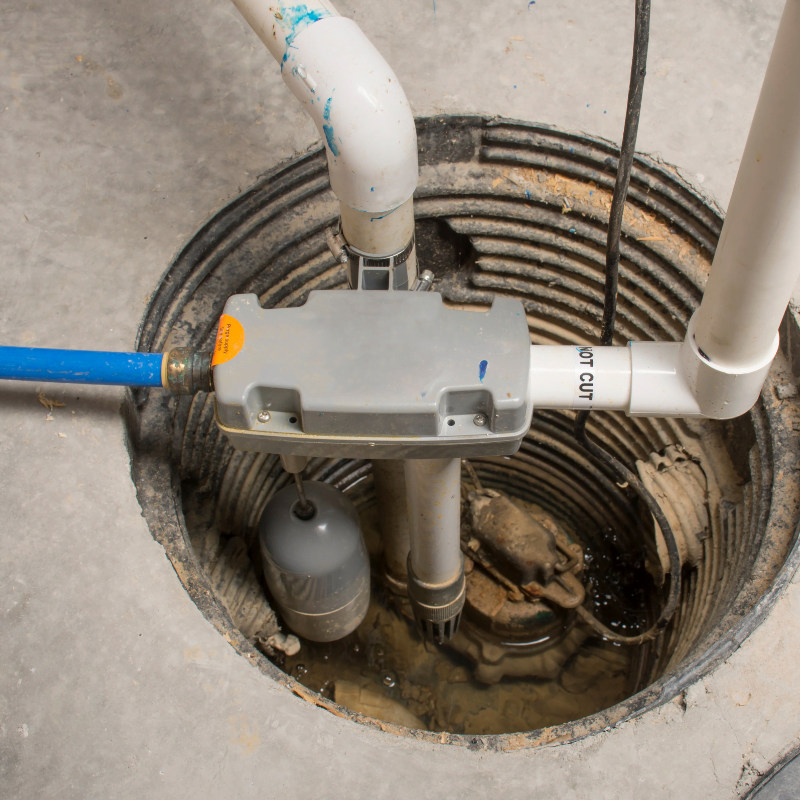1. Why would I need a sump pump?
A sump pump is a good idea if the area under your house is prone to flooding, or if your basement often smells damp and musty. Not only would a sump pump protect your home and your belongings from water damage and mold, but it would also protect your foundation.
Oversaturated soil is the most common reason a home’s foundation becomes damaged. This problem can be especially severe in the winter, when saturated soil can freeze and expand outward, causing foundations to buckle and crack.
2. How does a sump pump work?
A sump pump is a small pump installed in the lowest level of a basement or crawlspace, and it is intended to keep the area under the building dry to prevent flooding. Sump pumps are usually installed in sump pits (about 2 feet deep and 18 inches wide). Water collects in the pit via drains or natural migration through the soil and is expelled through discharge lines that carry the water away from the foundation. A check valve can be installed on a discharge line to prevent the water from flowing back into the pit.
Sump pumps run on electricity, and don’t usually require specialized wiring beyond a grounded outlet, although battery-operated and water-powered options are available.
3. What kind of maintenance is required for a sump pump?
Sump pumps tend to be very reliable, and most sump pumps are equipped with an alarm system that goes off when the water in the sump pit isn’t being expelled as it should. However, there are several steps that you can take to ensure your sump pump remains in good condition and avoid sump pump failure:
- Invest in a battery backup in case of power failure caused by storms or other factors.
- Make sure the pump is plugged in to a working ground fault circuit interrupter (GFCI) outlet and the cord is in good shape. In damp areas, GFCI breakers may trip, effectively shutting off the sump pump. Check in on your sump pump periodically so you can reset the GFCI if necessary.
- Ensure the pump itself is standing upright. Vibrations during operation can cause it to fall or tilt onto one side. This can jam the float arm so it can’t activate the pump.
- Periodically pour a bucket of water into the pit to make sure the pump starts automatically and the water drains quickly once the pump is on. If the pump doesn’t start, have it serviced.
- Physically remove a submersible pump from the pit and clean the grate on the bottom. The sucking action of the pump can pull small stones into the grate, blocking the inlet or damaging the pump over time.
- Ensure the outlet pipes are tightly joined together and draining out at least 20 feet (6 meters) away from your foundation.
- Make sure the vent hole in the discharge pipe is clear.
4. What should I do if my sump pump isn’t working?
Is your pump running constantly? Not running at all? Making noises it shouldn’t? Call the experts at Full Nelson Plumbing, Heating & Cooling! We provide 24-hour emergency service, and we know that sump pump failure can be a serious issue, even if the weather is dry.
Do you have more questions? Call us anytime at 816-420-9697, our team is here to help!




